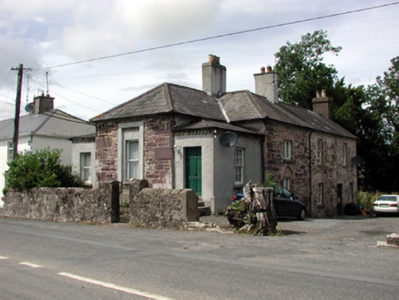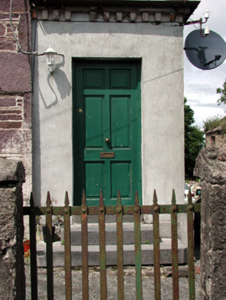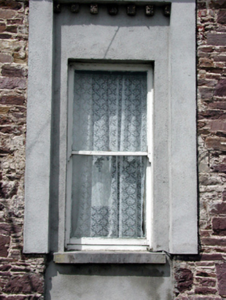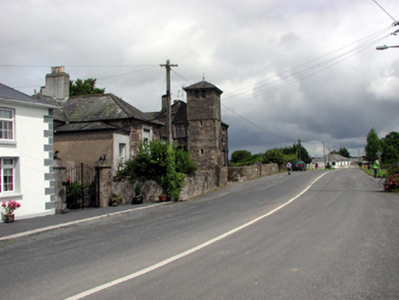Survey Data
Reg No
22803071
Rating
Regional
Categories of Special Interest
Architectural, Historical, Social
Previous Name
Portlaw Constabulary Barrack
Original Use
Officer's house
In Use As
House
Date
1840 - 1850
Coordinates
246902, 114731
Date Recorded
23/07/2003
Date Updated
--/--/--
Description
Detached three-bay single-storey over basement rubble stone officer’s house, c.1845, retaining some original fenestration with single-bay single-storey projecting bay to centre having single-bay single-storey recessed lower flanking bays, and four-bay two-storey side elevations to north-east and to south-west. Part refenestrated, c.1895. Extensively renovated, c.1960, to accommodate private residential use. Hipped slate roof with clay ridge tiles, rendered chimney stacks, and cast-iron rainwater goods on rendered eaves (having dentil detailing to lower flanking bays). Random rubble sandstone walls (originally rendered, ruled and lined with render removed, c.1960) with lime mortar, and traces of unpainted lime render over. Unpainted rendered walls to lower flanking bays with rendered detailing to eaves. Square-headed window openings (in square-headed recessed panel to central bay with some in round-headed recessed panels to side elevations) with stone sills, and red brick dressings. Replacement 1/1 timber sash windows, c.1895, retaining some original 6/6 timber sash windows. Square-headed door opening with three steps, and replacement timber panelled door, c.1960. Set back from line of road in own grounds with tarmacadam grounds to site having random rubble stone boundary wall to perimeter.
Appraisal
A picturesque, middle-size house built to designs prepared by William Tinsley (1804 - 1885), forming a group with the associated Royal Irish Constabulary barracks to east (22803072/WD-08-03-72). The house is of particular interest as evidence of the presence of a constabulary in the locality in the mid nineteenth century. Reasonably well maintained, the house retains most of its original form and early fabric, and contributes to the historic character of the locality.







